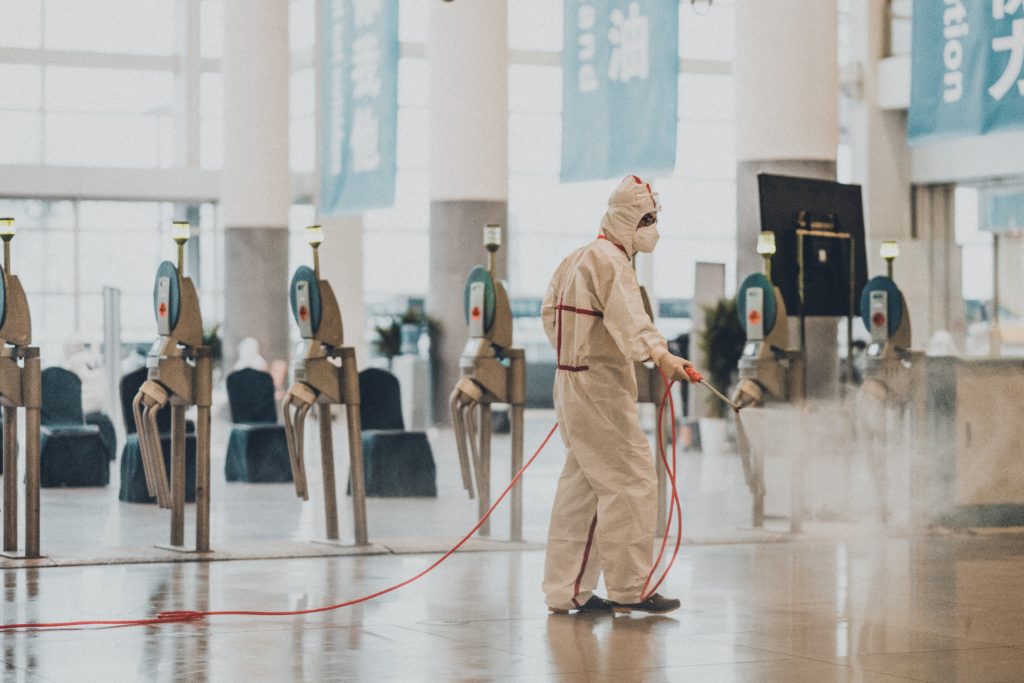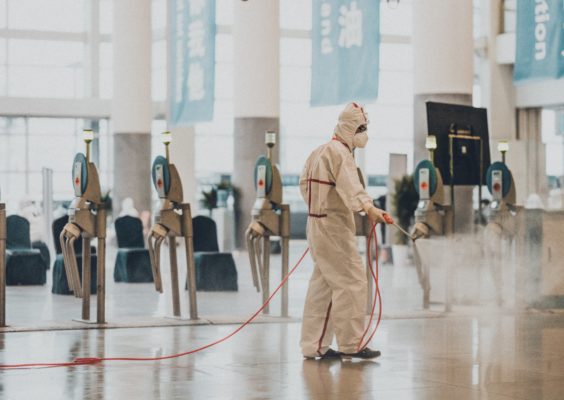
Amidst the global pandemic of COVID-19, many, if not most, factories, manufacturers, and processing facilities have been deemed “essential” businesses. Logistics companies, in particular, have experienced an increase in demand and an influx of new employees. You have likely implemented best practices for existing employees, but what about new hires? Are you currently facing onboarding and training of new manual skills employees during COVID-19? Learn how you can achieve a safe and efficient process with careful planning.
If you are a company in need of training additional employees right now, you may feel overwhelmed. Members of your current rockstar team may be absent due to illness or quarantine. You may need to add temporary employees to meet the increased demand for your service or product. No need to fret. Implementing the onboarding and training for blue-collar manual laborers is possible even during COVID-19.
Follow our five tips for a smooth training and onboarding process during the coronavirus pandemic.
1. Make Use of Technology
Now is the time to add technology to your onboarding and training process. COVID-19 social distancing guidelines can be followed by incorporating new and existing technology.
Use Digital Documentation: Make the time to update all Standard Operating Procedures (SOP). Make them easily accessible to all employees at any time.
The use of digital documentation provides an increase in employee efficiency.
The availability of up-to-date SOPs increases productivity as employees will not need to “waste” time looking for someone to answer their question(s). Employees can compare their work against SOPs as a quality control and training measure.
Moreover, digitally stored SOP’s can be updated and distributed faster than physical paper procedural manuals. Not on that, digital documentation is protected in case of fire or natural disaster.
NOTE: SOPs differ from the HR manual. SOPs provided detailed how-to instructions.
Use Electronic Communication: Provide a reliable communication channel where all new and existing employees can contact their manager with questions. Likewise, your management can also share urgent concerns or essential updates.
Use standard email or group chat tools such as Slack and Yammer to foster communication in a blue-collar workplace. Check with communication tool works best for your employees. You, as a company, must make sure the tools are available for all employees during their workday.
To make technology a successful part of the onboarding process, all employees must have access to computers or tablets. During COVID-19, the keypad and surface must be cleaned between users.
2. Implement Digital Training
While most offices have switched to work from home during the COVID-19, manufacturing and logistics facilities, do not have that luxury. New and existing employees must report to a physical location for work.
Postponing the hiring and training process can be a costly endeavor. Staff reduction results in lower production and lost profits. Therefore, you can change your onboarding for new employees with the use of virtual training software like how.fm. Furthermore, your new and existing employees can use digital training solutions repeatedly. And you can use the content for future new hires.
After the onset of COVID-19, many companies immediately made adjustments to their onboarding and training processes to incorporate virtual training. Follow these practices to remain efficient now and in the future.
- Develop digital training courses to address standard ethics as well as a summary of the company strategy and purpose.
- In addition to virtual training videos, introduce new employees to teammates and leaders via a virtual organization chart that includes pictures. Schedule virtual coffee breaks, using a platform like Zoom, with key stakeholders.
- Incorporate videos as part of the training and onboarding process, now and after COVID-19. Videos can be helpful to create tutorials and how-tos.
3. Teach Safety to Everyone
Normally at first, you would teach new employees safety protocols for operating heavy machinery or handling hazardous materials. It is vital during the COVID-19 pandemic that you educate new employees on cleanliness and sanitary guidelines.
Early in the onboarding process, inform new hires on hygiene standards and guidelines. Issue appropriate personal protection equipment (PPE) and communicate cleaning expectations during COVID-19. Clearly define expectations for wearing PPE and reporting of COVID-19 symptoms.
The health and livelihood of each and every employee depends on the abidance of these guidelines.
4. Establish a Mentor for new Employees
Until normal circumstances, new employees can benefit from training completed by numerous skilled members of the team.
However, to lower the risk of spreading COVID-19, new employees should be assigned to a single mentor and trainer. Try to avoid physical training sessions in a group setting.
Research shows how companies can successfully onboard virtually and globally. The study, which relied on the model established by Talya N. Bauer, identified that new employees are five times more active (i.e., engaged and productive) if they have an appointed mentor.
New employee mentors should be respected amongst the team and available to commit to a full training cycle.
New employees will often ask questions of their mentor that they fear to ask a manager. The role of a mentor is fundamental in the onboarding process. The person is also a key player in fostering an environment of inclusion.
5. Include new Team Members
“The faster new hires feel welcome and prepared for their jobs, the faster they will be able to contribute to the firm’s mission successfully.” Talya N. Bauer, Ph.D
Just because, social distancing is one of our main rules in everyday life, don’t create an emotional distance to your new employees. It is everyone’s responsibility to make a new employee feel included in those wired times. Treat new employees warmly, and enthusiastically. Reduce attrition rates by fostering an environment where new employees feel comfortable and accepted.
Create inclusion early on by utilizing open lines of communication. New employees benefit from a cycle of continuous feedback. All teammates should expect to receive feedback and should ask for it as well. Encourage the use of your preferred form of electronic communication.
You can help your employees to remind each other, and new team members, of company “norms” and safety regulations.
In a workplace environment built on inclusion and respect, your employees feel empowered to promote COVID-19 and other safety procedures. All employees must remind one other to abide by newly implemented safety guidelines.
Just as workplace safety requires deliberate actions and precautions, onboarding and training for blue-collar manual laborers do as well. These steps are designed to provide stability in uncertain times. Executing an onboarding process rooted in technology can be used during COVID-19 and well into the future.
